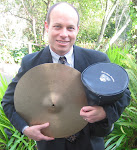Teachers spend copious amounts of time commenting on students’ social studies papers. Teachers may comment on the students’ understanding or misunderstanding of the unit content, completeness and balance of analysis, and investigation and comparison of sources. Additionally, teachers typically comment on the logic and structure of the paper, grammar, spelling, proper academic language, and other literacy aspects of academic writing.
If the teacher comments are interpreted as constructive criticism, the student is engaged in a joint productive activity. “Learning occurs most effectively when experts and novices work together for a common product or goal, and are therefore motivated to assist one another”(Center for Research on Education, Diversity & Excellence, Five Standards for Effective Pedagogy, 2002, www.crede.ucsc.edu/tools/research/standards/standards.html). This is well and good, but do high school students interpret teacher comments on papers as constructive criticism? More basically, do the students even read the comments, and if so, do they use those teacher comments as a guideline for the next paper? That was the question I asked 22 High School history students. I was unable to find previous studies that answered my questions. However, I speculate that the research has been done and is in some education or psychology journal. Perhaps I’ve stumbled upon a research idea for someone’s masters thesis.
I gave a tenth grade World History class the following instructions. (The number of students that answered is in parentheses.)
Please put your head down, and don’t be influenced by your neighbor. I want your honest analysis—not what you think I want to hear. You may pick from four possible answers: never, seldom, usually, or always. Raise your hand for the best answer for two questions:
A. When a teacher corrects a paper I wrote, I read the comments… never (1), seldom (2), usually (7), or always (10).
B. When I write the next paper for that same teacher, I use the comments on the first paper as a guideline... never (4), seldom (4), usually (10), or always (2).
The total number of students in the class was 22. Two students refused to participate.
The total sample size was too small to extrapolate to a more general population of high school students. If the same trend was found on a larger sample size, such as fifty or more students, and one drew from a statistically normal population, disturbing conclusions could be reached. Despite lessons from a skillful and accomplished educator, large numbers of students do not engage in a joint productive activity with their teacher. If 40% of students don’t use teacher comments constructively, the assessment process is no longer a feedback loop. Instead, assessment is only a means for the teacher to determine a grade.
Fortunately, schools can fix this problem before high school. Grammar schools can and should teach students how to use teacher feedback.
Friday, December 31, 2010
Subscribe to:
Posts (Atom)
Teacher by Day, Drummer by Night

Please recommend this blog to others
Popular Posts
-
Many students, grammar school to graduate school, dread writing large papers. However, if you know how to break down the task it becomes alm...
-
BF Skinner Carl Rogers This is a scholarly piece but worth the effort. Please read on... The book, Taking Sides (Noll, 2002) st...
-
I wrote this skit to illustrate how the evolution of art--its form, audience and production have changed. Form, audience, and production ha...


